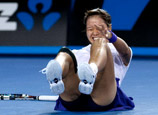
Ji said Xiu.com's main warehouses are in Shenzhen, as imports are the main focus."We are confident about the payment pattern because our rate of returns is low, only about 4 percent," Ji said. He also said they will consider going public, but not for half a year.
"Clothes and shoes in Chinese shopping malls are very homogeneous. If we serve customers diversified fashion products with pleasing prices and service, the opportunity will be huge," Ji said.
After the financial crisis in 2008, purchasing power for luxury consumer goods in the US andEuropeweakened, with many high-end products selling through outlets malls, private sales and the Internet. US-based Gilt.com is a successful example of selling discount luxury fashion goods.
Many similar high-end fashion online sellers emerged in China, such as 5lux.com, Jiapin.com and Shangpin.com. Many of them only target luxury products sold online.
The Chinese Internet shopping market was valued at 284.2 billion yuan in the third quarter of 2012, a 43.9 percent increase year-on-year, according to a report by Beijing-based market research company iResearch Consulting Group.
Taobao Mall has been the largest player among business-to-customer online clothing sellers, with a market share of 68.5 percent and trading volume totaling 41.1 billion yuan in 2011, according to iResearch.
Zhao Xueqin, a senior analyst at CITIC Securities, said online sellers save on rental, labor and operating costs, but have to spend more on storage, delivery and marketing fees than traditional retail companies.
Zhao said that in 2011, the advertising fees of Web portals, search engines and navigation websites increased more than 50 percent on the previous year.
"In the Chinese e-commerce market, most online sellers are striving for customers with low margin and subsidies," said Zhao. "Online sellers with sustainable funding support can survive and improve their profitability to gain satisfying returns."

















 China's weekly story (2013.01.21-01.27)
China's weekly story (2013.01.21-01.27)


![]()
